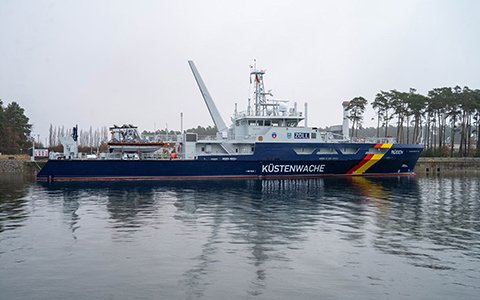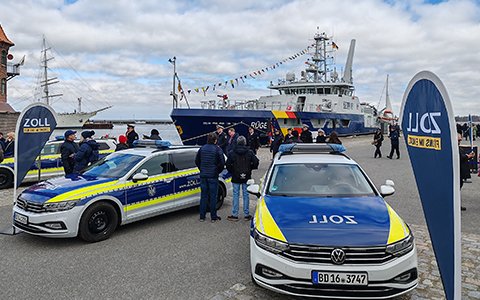How Rolls-Royce is securing its future with the ‘Rügen’
Rolls-Royce is famous for its luxury cars and aircraft engines, but now it is setting sail into the maritime industry. With the launch of the gas-powered vessel ‘Rügen’, Rolls-Royce is making a significant move towards sustainable marine technology. But what does this mean for investors?
Financial performance
In 2022, Rolls-Royce reported revenues of £12.7 billion, up from £11.2 billion in 2021. Operating profit reached £650 million, reflecting a strong recovery from the pandemic. However, with net debt at around £3.3 billion, financial concerns remain. The company is focusing on boosting free cash flow, which reached £500 million in 2022, showing that cost-saving measures and long-term maintenance contracts are paying off.

The ‘Rügen’: technological innovation at sea
The ‘Rügen’ is a 67-metre-long customs vessel equipped with four 16-cylinder mtu Series 4000 gas engines from Rolls-Royce. Two additional engines provide onboard electricity. With a top speed of 23 knots and multiple operational modes, it is one of the most advanced customs vessels in the world. These engines already meet strict emission regulations without requiring additional exhaust treatment, a major advantage in an industry increasingly focused on sustainability.
Why this matters for investors
- Long-term revenue streams – Rolls-Royce not only supplies the engines but also secures maintenance contracts for 11 other German customs vessels, ensuring steady income.
- Sustainability focus – Governments and shipping companies are seeking cleaner propulsion solutions. Rolls-Royce is capitalising on this trend, strengthening its position as a leader in green maritime technology.
- Diversification – Dependence on aviation and defence makes Rolls-Royce vulnerable. Expanding into marine technology spreads risk and opens new markets.

Balancing growth and debt
While Rolls-Royce is making positive strides, investors should monitor debt reduction, cash flow, and innovation investments. The company’s share price has already risen by 20% this year, driven by better-than-expected earnings. This maritime contract could further support that momentum.
Is Rolls-Royce a smart investment?
For investors who believe in the demand for low-emission energy solutions and the recovery of global travel, Rolls-Royce offers an attractive prospect. However, high debt and economic uncertainties remain risks. The coming years will be crucial in determining whether the company can strike the right balance between innovation and financial stability.
What do you think? Is Rolls-Royce’s move into maritime technology a smart strategy, or is its debt still too big a burden? Let us know in the comments!
Foto’s thx to: MarineTraffic-com and Rolls-Royce